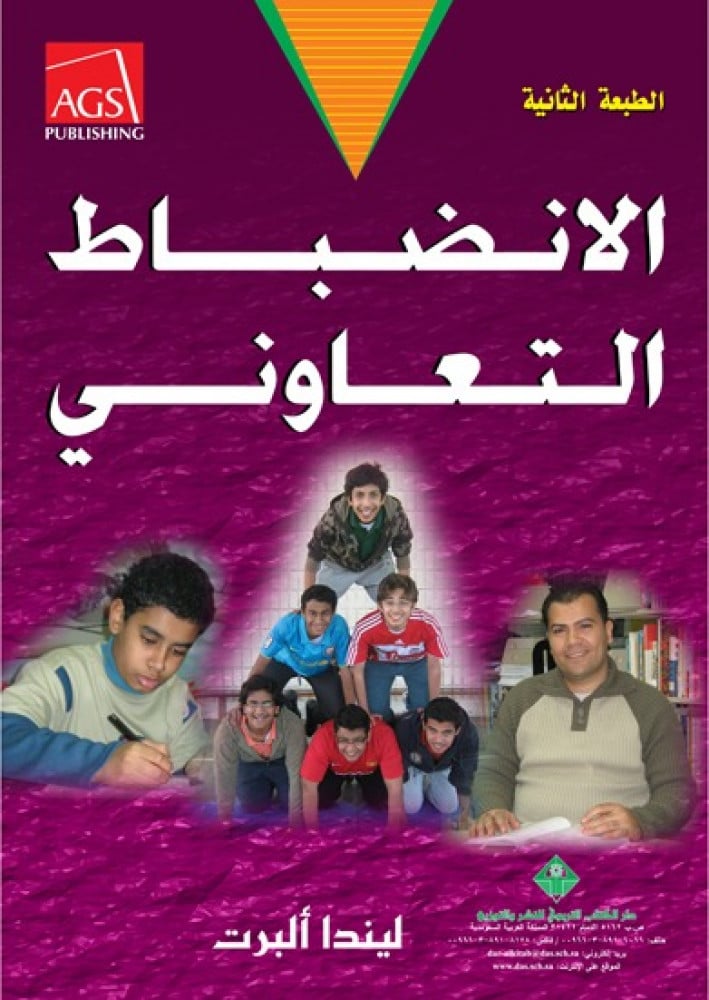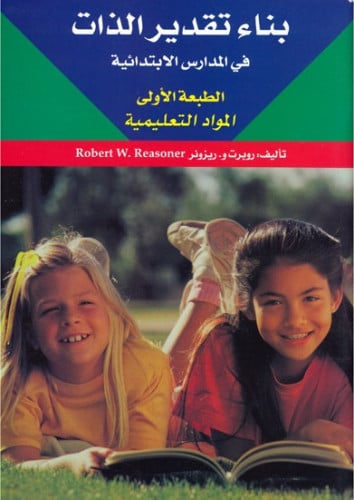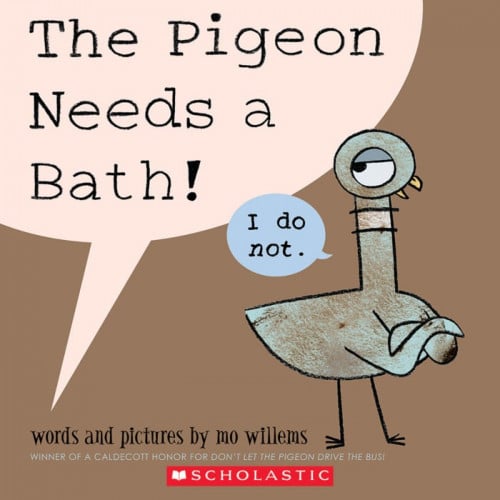AVAILABLE IN ARABIC
*About This Book
Increase student achievement
Intervene effectively when students misbehave
Develop a classroom climate and school culture based on caring, clear limits, consistency, and respect
Build a foundation for the prevention of violence
Improve home, school, and community collaboration
Elementary and Secondary level packages available
Offers more practical, effective strategies for dealing with angry, aggressive, and difficult students
Features conflict resolution process that resolves teacher-student problems, as well as student-student problems
Further cements the parent-teacher partnership with strategies for including parents in the planning process
Models a classroom code of conduct that holds all students accountable and teaches them how to evaluate their own behavior
Topics : Student behavior
Table Of Content
PREFACE
INTRODUCTION
The Approach: Practical and Positive
The Key: Quality of Teacher-Student Interaction
The Goal: Cooperative Relationships in and Beyond the Classroom 2 The Framework: Time-Tested and Practical
The Action Plan Process: Theories Become Practice
The Winner: The Entire School Community
Getting Started: The Process Unfolds
CHAPTER 1: The Basics of Behavior 1: Behavior Is Based on Choice
Choices, Choices, Choices
Teacher Expectations
Styles of Classroom Management 9 Teacher Responses to Misbehavior
CHAPTER 2: The Basics of Behavior 2: The Need to Belong
What It Means to Belong
The Importance of the "Three Cs"
The Encouragement Process
CHAPTER 3: The Basics of Behavior 3: The Four Goals of Misbehavior
The "Difficult Child" Syndrome
The Truth Is in the Outcome
CHAPTER 4: Characteristics of Attention-Seeking Behavior
Active Attention Seeking
Passive Attention Seeking
How to Identify Attention-Seeking Behavior
Origins of Attention-Seeking Behavior
Attention-Seeking Behavior's Silver Lining
Principles of Prevention
CHAPTER 5: When the Goal Is Attention: Interventions
Strategy 1: Minimize the Attention
Strategy 2: Clarify Desired Behavior
Strategy 3: Legitimize the Behavior
Strategy 4: Do the Unexpected
Strategy 5: Distract the Student
Strategy 6: Notice Appropriate Behavior
Strategy 7: Move the Student
CHAPTER 6: Characteristics of Power-Seeking Behavior
Active Power Seeking
Passive Power Seeking
How to Identify Power-Seeking Behavior
Origins of Power-Seeking Behavior
Power-Seeking Behavior's Silver Lining
Principles of Prevention
CHAPTER 7: Characteristics of Revenge-Seeking Behavior
Active Revenge Seeking
Passive Revenge Seeking
How to Identify Revenge-seeking Behavior
Origins of Revenge-Seeking Behavior
Revenge-Seeking Behavior's Silver Lining
Principles of Prevention
CHAPTER 8: Avoiding and Defusing Confrontations
Guideline 1: Focus on the Behavior, Not the Student
Guideline 2: Take Charge of Negative Emotions
Guideline 3: Avoid Escalating the Situation
Guideline 4: Discuss Misbehavior Later
Guideline 5: Allow Students to Save Face
CHAPTER 9: When the Goal Is Power or Revenge: Interventions
Three Stages of a Classroom Volcano
The Rumbling Stage: Making a Graceful Exit
The Eruption Stage: Use Time-Out
The Resolution Stage: Set Consequences
The Resolution Stage: Conduct a Teacher-Student Conference
Dealing With Power and Revenge Behavior
CHAPTER 10: More About Revenge Behavior
Forming Relationships With Students We Dislike
Teaching Students to Deal With Their Emotions
Applying Intervention Techniques
CHAPTER 11: Characteristics of Avoidance-of-Failure Behavior
Active Avoidance-of-Failure
Passive Avoidance-of-Failure
How to Identify Avoidance-of-Failure Behavior
Origins of Avoidance-of-Failure Behavior
Avoidance-of-Failure Behavior's Silver Lining
Principles of Prevention
CHAPTER 12: When the Goal Is Avoidance-of Failure: Interventions
The First Five Strategies
Strategy 1: Modify Instructional Methods
Strategy 2: Provide Tutoring
Strategy 3: Encourage Positive Self-Talk
Strategy 4: Reframe the "I Can't" Refrain
Strategy 5: Teach Procedures for Becoming "Unstuck"
Five Additional Intervention Strategies: An Overview
CHAPTER 13: Helping Students Feel Capable
Motivator of Success: The "I-Can" Level
Strategy 1: Make Mistakes Okay
Strategy 2: Build Confidence
Strategy 3: Focus on Past Successes
Strategy 4: Make Learning Tangible
Strategy 5: Recognize Achievement
CHAPTER 14: Helping Students Connect
The Five A's
Acceptance
Attention
Appreciation
Affirmation
Affection
How Many A's Make an A+ Relationship?
CHAPTER 15: Helping Students Contribute
Satisfying the Need to Be Needed
Strategy 1: Encourage Students' Contributions to the Class
Strategy 2: Encourage Students' Contributions to the School
Strategy 3: Encourage Students' Contributions to the Community
Strategy 4: Encourage Students to Work to Protect the Environment
Strategy 5: Encourage Students to Help Other Students
CHAPTER 16: The Classroom Code of Conduct
Defining the Code of Conduct
Teaching the Code of Conduct
Enforcing the Code of Conduct
Reinforcing the Code of Conduct
CHAPTER 17: Cooperative Conflict Resolution
Setting the Tone for Teacher-Student Conflict Resolution
The Teacher-Student Conflict Resolution Conference
Student-Student Conflict Resolution
CHAPTER 18: The School Action Plan Process
A Written School Action Plan
School Action Plan Step 1: Pinpoint and Describe the Student's Behavior
School Action Plan Step 2: Identify the Goal of the Misbehavior
School Action Plan Step 3: Choose Intervention Techniques for the Moment of Misbehavior
School Action Plan Step 4: Select Encouragement Techniques to Build Self-Esteem
School Action Plan Step 5: Involve Students, Parents, and Others as Partners
Using the School Action Plan as a Monitor of Progress
CHAPTER 19: Involving Students as Partners
Teach Students the Cooperative Discipline Concepts
Involve Students in Selecting Interventions for Misbehavior
Involve Students in Creating a Three C Classroom
Involve Students in Creating a Safe and Orderly Environment
Involve Students in the Decision-Making Process
CHAPTER 20: Involving Parents as Partners
Informing Parents About Cooperative Discipline
Guidelines for Establishing an Atmosphere of Mutual Support
Notifying Parents When Behavior Problems Occur
Structuring the Parent-Teacher Conference
Structuring the Parent-Teacher-Student Discipline Conference
Getting School Support for Parents as Partners
THE CHANGE PROCESS
COOPERATIVE DISCIPLINE AND SAFE SCHOOL PLANNING: A Winning Combination
COOPERATIVE DISCIPLINE AND PERSONAL POWER: An Antidote to Bullying Behavior
BIBLIOGRAPHY
APPENDIXES
- Identifying the Four Goals of Misbehavior
- Understanding the Goals of Misbehavior
- Summary Chart of Interventions
- The Building Blocks of Self-Esteem
- Conflict Resolution Contract
- Cooperative Discipline School Action Plan
- Cooperative Discipline Student Action Plan
- Cooperative Discipline Home Action Plan
- Activities to Teach the Code of Conduct
INDEX
About the Authors
Linda Albert:

Linda Albert, author of the Cooperative Discipline program, is an educator, family counselor, , and international consultant. She is the author of seven books, the responsible kids video series, and two educational training programs, for many years her syndicated column “coping with Kids” appeared in over 90 newspapers nationwide. she has been featured on news programs on NBC, CBS, and CNN.
ISBN: 9789960863498
Author: Linda Albert
Publisher: Educational Book House
Size: 17*24cm
Pages number: 326













